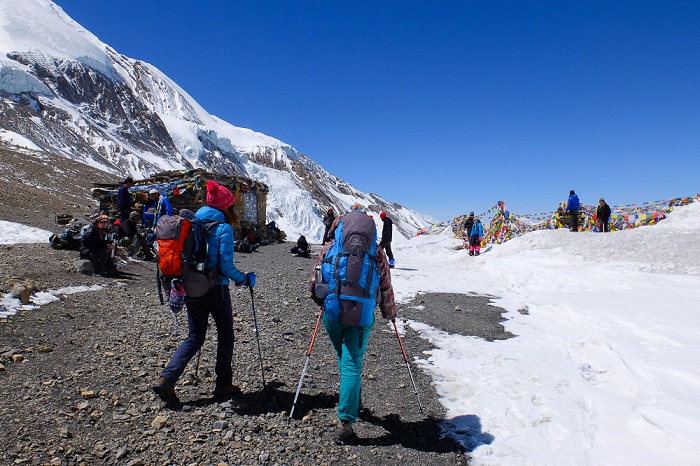Annapurna Trek
Overview
If you want to know about Annapurna Trek you’re on the right path. Here from our blog we are going to give you every detailed information which one should know about Annapurna Trek.
Annapurna Base Camp
Itinerary
Day 1 :
Leave Kathmandu and travel to Pokhara
Traveling 215 miles, taking 7 hours, and staying at Hotel Serenity in Pokhara for Indiahikes Trekkers
By bus or aeroplane from Kathmandu, you must travel independently to get to Pokhara. At Hotel Serenity, you’ll run into the rest of the group. Indiahikes is responsible for your accommodation at Hotel Serenity.
Day 2 :
Drive to Lower Ghandruk from Pokhara. The Komrong trek
55 km drive, 3–4 hours, with an elevation gain of 2,760–5,415 feet
5 km trek, 3 to 4 hours, and an elevation gain of 5,415 to 7,380 feet.
The ascent gradient is average.
Day 3:
The Chhomrong to Komrong trek
7 km; 5–6 hours; 7,380–7,120 feet of altitude gained or lost during the trek.
begins with a brief, gentle fall that lasts for roughly an hour. The journey to Chomrung then involves a long elevation. At tea shops along the walk, you can fill up your water bottles.
Day 4:
Ascend Chhomrong to Dovan via foot
10.50 kilometre trek, 6-7 hours, 7,120 to 8,460 feet of elevation gain
Moderate-difficult. After a 20-minute initial dip, there is an hour-long strenuous rise. a 30 minute sharp downhill after a gradual uphill for 30 minutes. concluding with a two-hour rise to Dovan On the trip, tea shops on the road will re-fill your water bottles.
Day 5:
Trekking from Dovan to the base of Machapuchare
10 kilometre trek, 6-7 hours, 8,460 to 12,135 feet of elevation gain.
Moderate-difficult. a slow climb marks the beginning. It made up of several gradual ascents that are somewhat steep. On the trip, tea shops on the road will re-fill your water bottles.
Day 6:
Trekking between Machapuchare Base Camp and Annapurna Base Camp
3.50 kilometres; 2 hours; 12,135 to 13,550 feet of elevation gain; trek
Moderate. The first kilometre or so of the trail is a steep incline before it gently climbs to ABC. On the trip, tea shops on the road will re-fill your water bottles.
Day 7:
From Bamboo, hike up to Annapurna Base Camp
15.50 miles, 8 to 9 hours, and an elevation loss of 13,550 feet to 7,675 feet make up the trek.
Moderate-difficult. Departing the same way back, with a mixture of steep and moderate descent. On the trip, tea shops on the road will re-fill your water bottles.
Day 8:
From Bamboo, hike to Jhinu
Trekking 10 miles, taking 6-7 hours, and losing 7,675 feet to 5,770 feet in elevation
Moderate-difficult. After a 45-minute difficult rise, there will be a 2-hour steep descent. Afterward, the trail continued to descend sharply for the next 45 minutes or so. At tea shops along the walk, you can fill up your water bottles.
Day 9:
From Jhinu, hike to Syauli Bazaar. to Pokhara by car
Six kilometres, four hours, and a trek 5,770 feet of elevation are lost, whereas 4,480 feet are gained.
Drop-off location for Indiahikes Trekkers is the Hotel Serenity in Pokhara, which is 45 km away and takes 1-2 hours to drive.
Easy-moderate. After around 30 minutes of steep downhill, there will be a gentle rise. At tea shops along the walk, you can fill up your water bottles.
Difficulty level
The Annapurna Circuit’s difficulty is mostly determined by your physical condition, outlook on life, and travel route.
More people are beginning to shorten their journey by days as a result of the addition of the dirt roads. It is now possible to hop into a jeep and drive to a location that required days of hiking in the past. Instead of climbing the entire mountain trek, there are frequently choices to take shorter dirt roads and still enjoy breathtaking vistas. Instead of automatically sticking to dirt roads, choose the correct guides, and they’ll make sure you see all the landscape you’re after.
Weather
Temperatures can drop into the deep negatives when you’re high in the mountains of Nepal. especially at night. The inability to sleep or stay warm may result from this. This is why it’s crucial that you have the right equipment with you. In the Himalayas, a knockoff brand sleeping bag won’t do the trick.
If you can, carry a metal water flask as well. When you enter a region with cold temperatures, there is a good probability that the water in your plastic water bottle will freeze because it hasn’t been heated. Bottled water gets more expensive as you go higher, so it would be preferable if you could bring something to cleanse the water. Food falls into the same category. Once the roads run out up the mountain, dinner may cost four times as much as it would have in Kathmandu.
Altitude
No amount of conventional city hiking preparation can truly help you out here in terms of altitude. You probably won’t feel the lack of oxygen until you’ve travelled more than about 2500 metres. This should be taken into account while planning your trek’s days in advance, and you should allow enough time for acclimatisation to take place throughout your trip. Everyone is impacted by it differently. Consider that there is just half as much oxygen at the highest point of the Annapurna Trail (Thorong La Pass, 5416m) as there is at sea level. On this front, knowledgeable, well-trained advisors are essential.

